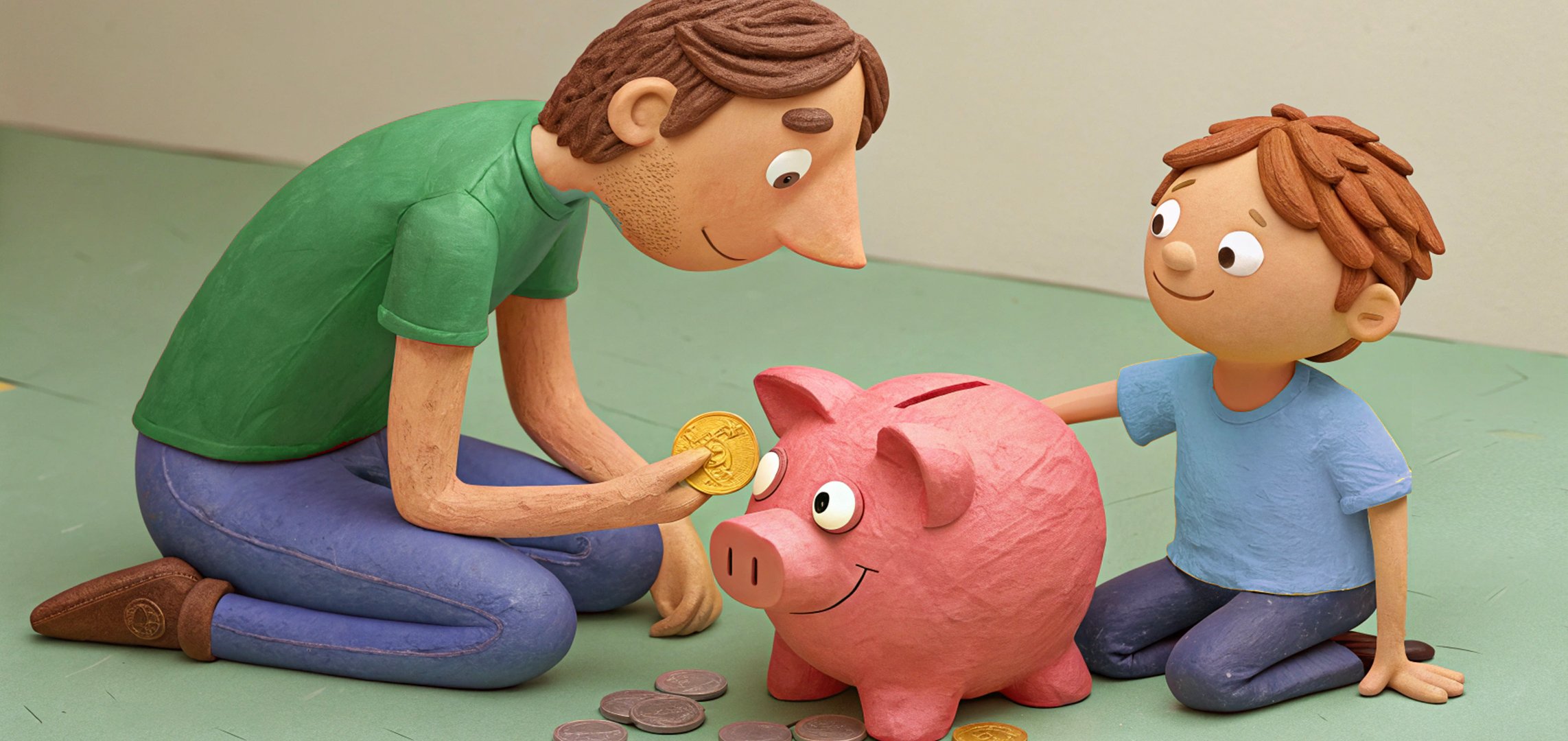
If you’re like most parents, you want things to go well for your kids, whether it’s acing a test, scoring big on the field, or getting into their dream college. Chances are, you want them to pursue a career and live happily — and comfortably too.
But doing well in life requires basic financial literacy, and it’s important to get started early.
No matter how much your kids earn, if they know how to budget wisely and save for a rainy day, they’ll be in a good place. As a parent, it’s important to teach these skills, and the sooner, the better.
Did you know? 91% of kids and teens (Gen Alpha, Gen Z) believe financial knowledge and skills are needed to achieve their life goals — and 94% of parents (Millennial, Gen X) agree.1
Haven’t started talking with your child about money? Don’t worry. We’ve got you covered; keep reading to find tips, topics and even some games to make it fun (or at least to avoid the “Awww, Mom ...”).
So, let’s get started!
Why learn about money?
Let’s face it. Kids can be skeptical. When you first bring up finances, they might ask why they should care. Here are some solid reasons why your kids should take an interest in managing their money, even at an early age.
- Money can help them achieve their goals (like buying that new video game).
- It helps them plan their futures.
- It’s a tool they’ll use their whole lives (one day buying groceries and paying rent).
- It’s a way to give back to others and make a difference in the world.
- It can result in a good credit history down the road.
Did you know? The results of a Greenlight survey show financial stress and anxiety increase as early as 14 years old as financial confidence declines. 76% of Gen Z teens are just as stressed about money as their Millennial (76%) and Gen X (75%) parents, compared to only 31% of Gen Alpha.1
Top 5 money skills every kid needs to know
- Saving: Setting money aside for future needs or wants.
- Budgeting: Planning how to use money wisely.
- Spending: Choosing what to buy and what to skip.
- Earning: Finding ways to make money, like doing chores or small jobs.
- Giving: Helping others by donating money or time.
Game: Try our crossword puzzle
Sit with your child and help them answer the questions listed on the right-hand column. Click the “Submit” button below the puzzle and watch the answers populate the squares. Did you get any wrong? Hit “Retry.” The correct answers stay in place, and you can fix the incorrect answers. It’s a fun way to learn together!
Cover the basics
What's the difference between needs and wants?
Actually, this is good for every one of us to review, because it helps us create our household budgets. It’s a good idea to get your kids used to identifying the differences, even at an early age. Help them understand the difference and how this can help them prioritize their spending. Ask them about which things in their lives are needs vs. wants. Then talk about how to save the money they need for both.
Game: Can you spot the needs vs. wants?
Teach your child how to identify and prioritize needs over wants. In this puzzle, click on items you think are needs. The pop-up window will tell you if you're correct!
Set a savings goal
Help them identify something special they want to buy. Then encourage them to save up through chores or allowance money. Make it rewarding by tracking their progress along the way.
Talk about dividing money
Give them a small allowance and teach them to divide what they earn into three categories: money to save, money to spend, and money to share with others.
Teach kids the importance of a positive credit history
Explain to your kids how financial literacy and getting in good habits from a young age can begin to build good credit history early on — which will be useful when applying for loans.2
Make learning fun and memorable
Teaching your kids about money doesn’t have to be boring. Turn it into a game. Talk about it while you’re walking the aisles of the grocery store or when you're planning a family vacation. We have a few ideas here, but the sky’s the limit.
Game: Money memory
Click on the cards to flip them. Try to remember the position of the object you find and what the price tag says. Then click the cards to find where the matching amount of money is to complete the purchase.
Play one of our easy online games together
You’ve already come across some online activities in this article. If you prefer offline techniques, challenge your child to a game of Monopoly. It hones in on money management, savings and risk.3
Set up a family bank
Teach the concept of interest with a family bank. Have kids deposit their money and earn a small amount of interest along the way. Be sure to help them track the growth.
Start a mini business
You can extend the financial education by encouraging them to start a mini business. They can start up a lemonade stand, offer a helpful skill to family or friends to make some money, or sell a homemade craft. It’s a great way to teach the meaning of profits (after paying for your materials cost).
Shop with a budget
Give your kids a set amount of money and a shopping list. Then teach them how to make smart choices by working within their budget.
Don’t stop here: Check back often for more financial literacy activities for kids!
At Modern Woodmen, we're with your family for the long haul. Building kids' financial literacy early can make a big, positive difference throughout their lives.





